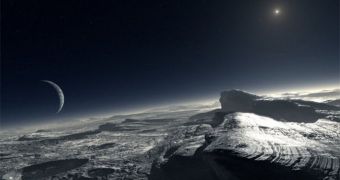Scientists have recently determined that the atmosphere surrounding the dwarf planet Pluto is poisonous and toxic for humans. Apparently, it contains the dangerous gas carbon monoxide, the same that causes asphyxiation in humans who get trapped in fires.
The investigation also managed to show that the space object's atmosphere is also extending much higher above the surface than originally thought. The research that led to these conclusions has been ongoing for about two decades.
In order to see so far away to the edge of the solar system, experts used the Hawaii-based James Clerk Maxwell Telescope, a 15-meter observatory that can easily make out such distant target.
Scottish astronomers from the University of St. Andrews led the research, which was coordinated by expert Jane Greaves. The group determined that the atmosphere surrounding Pluto extends far beyond the 100-kilometer (60-mile) mark that past studies identified.
The latest data seem to indicate that the atmosphere in fact extends nearly 25 percent of the distance separating Pluto from Charon, its largest moon. This distance is equivalent to about 1,860 miles (3,000 kilometers), Space reports.
“It was thrilling to see the signal gradually emerge as we added in many nights of data. The change in brightness over the last decade is startling,” Greaves explained. She presented the work earlier today, at the national meeting of the Royal Astronomical Society, held in Wales, the United Kingdom.
“We think the atmosphere may have grown in size, or the carbon monoxide abundance may have been boosted,” the expert goes on to say. She adds that Pluto is the only one of the known dwarf planets to feature a functional atmosphere.
“Seeing such an example of extraterrestrial climate change is fascinating,” the scientist explains, saying that the data could be useful for extrapolating the situation on other planets as well.
“This cold simple atmosphere that is strongly driven by the heat from the Sun could give us important clues to how some of the basic physics works, and act as a contrasting test-bed to help us better understand the Earth's atmosphere,” she reveals.

 14 DAY TRIAL //
14 DAY TRIAL //